《Compatibility of international and national environmental law》
| 作者 | Ebbesson;Jonas. 编者 |
|---|---|
| 出版 | Kluwer Law International |
| 参考页数 | 301 |
| 出版时间 | 1996(求助前请核对) 目录预览 |
| ISBN号 | 9041109196 — 求助条款 |
| PDF编号 | 813681208(仅供预览,未存储实际文件) |
| 求助格式 | 扫描PDF(若分多册发行,每次仅能受理1册) |
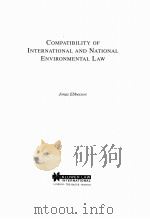
PART Ⅰ3
1Law and International Environmental Management3
1.1The International Environment3
1.1.1 Limits of the Biosphere3
1.1.2 Pollution in the International Context6
1.2The Legal Response10
1.2.1 Structural Changes10
1.2.2 National - International10
1.2.3 Coexistence - Co-operation14
1.2.4 Reparation - Prevention17
1.2.5 Laissez-faire - Coordination18
1.2.6 Absolute Sources Doctrine - Relative Normativity19
1.2.7 Piece-by-piece - Holism23
1.2.8 Shortcomings24
1.3A Theory on the Compatibility of International and National Environmental Law26
1.3.1 Components of International Environmental Law and Management27
1.3.2 National Means for the Implementation of Environmental Treaties30
1.3.3 The Concept of Compatibility32
1.3.4 Incompatibility of International and National Environmental Law39
1.3.5 Enforcement of International Environmental Law43
2Linking International and National Environmental Law46
2.1 Outlines of the Chapter46
2.2The Systematic Relation of International and National Law47
2.2.1 Ecology and Law as Systems47
2.2.2 International and National Law; One or Several Legal Systems?48
2.2.3 Hans Kelsen vs Dionisio Anzilotti49
2.2.4 Criticism and Conclusion52
2.3 Does International Law Concern the Legal Position of Individuals?56
2.4 International Obligations not Related to the Legal Position of Individuals62
2.5International Obligations Related to the Legal Position of Individuals63
2.5.1 “Rights” and “Duties”63
2.5.2 Legal Positions - “Jural Correlatives”66
2.5.3 A Legal or Factual Situation?70
2.6 Conclusions76
3Normative Structures and the Discretion of States77
3.1 Outlines of the Chapter77
3.2 Norms of Conduct and Norms of Competence in International Environmental Law78
3.3Defining International Obligations on Pollution Control83
3.3.1 Different Normative Structures and Criteria83
3.3.2 Balancing Norms86
3.3.3 Fixed Norms89
3.3.4 Goal-oriented Norms90
3.3.5 Domestic Procedures91
3.3.6 Non-discrimination92
3.4 External Aspects of the Different Structures92
3.5 Discretion95
3.6 Conclusions98
PART Ⅱ103
4International Obligations Defined by Balancing Norms103
4.1 Outlines of the Chapter103
4.2Due Diligence Obligations103
4.2.1 Customary Due Diligence Obligations103
4.2.2 Codified Due Diligence Obligations107
4.2.3 Criteria for Implementation113
4.3Stricter Obligations of Balancing Norms114
4.3.1 Introduction; between Due Diligence and Complete Prohibition114
4.3.2 Concepts Indicating Stricter Requirements than Due Diligence115
4.3.3 Criteria for Implementation120
4.4Balancing Source Standards122
4.4.1 Introduction; Historical Development122
4.4.2 The Concept of Best Available Technology in International Law125
4.4.3 Other Balancing Source Standards of International Law128
4.4.4 Criteria for Implementation130
4.5 Conclusions134
5International Obligations Defined by Fixed Norms136
5.1 Outlines of the Chapter136
5.2Percentage Reduction Obligations136
5.2.1 Introduction136
5.2.2 Issue Areas138
5.2.3 Criteria for Implementation143
5.3Complete Prohibitions145
5.3.1 Introduction145
5.3.2 Issue Areas146
5.3.3 Criteria for Implementation149
5.4Fixed Source Standards150
5.4.1 Introduction150
5.4.2 Issue Areas152
5.4.3 Criteria for Implementation154
5.5Civil Liability155
5.5.1 Introduction155
5.5.2 Issue Areas157
5.5.3 Criteria for Implementation160
5.6 Conclusions161
6International Obligations Defined by Goal-oriented Norms163
6.1 Outlines of the Chapter163
6.2Recipient Standards/Objectives165
6.2.1 Introduction165
6.2.2 Issue Areas166
6.2.3 Criteria for Implementation172
6.3Other Goal-oriented Approaches in a Transboundary Context174
6.3.1 The “Threshold Concept” of Customary International Law174
6.3.2 Critical Loads and Transboundary Pollution177
6.4 Conclusions178
7International Obligations Relating to Domestic Procedures180
7.1 Outlines of the Chapter180
7.2 Prior Approval by National Institution181
7.3 Environmental Impact Assessment185
7.4 Public Participation and Legal Standing188
7.5 Conclusions190
8International Obligations on Non-discrimination191
8.1 Outlines of the Chapter191
8.2 Issue Areas191
8.3 Conclusions197
9 Some Remarks on the Legal Approaches Presented198
PART Ⅲ203
10Integrating Environmental Treaties with Domestic Law203
10.1 Outlines of the Chapter203
10.2Consideration of Treaties by Domestic Institutions206
10.2.1 Particular Treaty Incorporation206
10.2.2 Various Approaches to Direct Application of Treaties208
10.2.3 A Domestic Legal Source?217
10.3Normative Integration and the Notion of Compatibility of International and National Environmental Law219
10.3.1 Pro et Contra219
10.3.2 Normative Integration and Different Approaches of International Environmental Law226
10.4 Conclusions231
11Sustainable Development233
11.1 Outlines of the Chapter233
11.2 Sustainable Development and the North-South Issue235
11.3The Legal Impact on Pollution Control237
11.3.1 The World Commission on Environment and Development237
11.3.2 The WCED Experts Group on Environmental Law239
11.3.3 An Evolving Legal Principle?240
11.3.4 Attempts of Specification243
11.4Transposing the Objective to Operational Standards246
11.4.1 Three Key Constituents246
11.4.2 Environmental Quality247
11.4.3 Pro et Contra249
11.4.4 Precaution and Environmental Impact Assessments252
11.5 Sustainable Development and the Compatibility of International and National Environmental Law255
Table of Treaties and Other International Documents257
Table of Cases270
Bibliography273
Index299
1996《Compatibility of international and national environmental law》由于是年代较久的资料都绝版了,几乎不可能购买到实物。如果大家为了学习确实需要,可向博主求助其电子版PDF文件(由Ebbesson;Jonas. 1996 Kluwer Law International 出版的版本) 。对合法合规的求助,我会当即受理并将下载地址发送给你。
高度相关资料
-
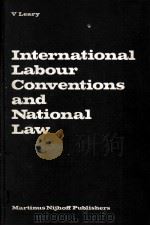
- INTERNATIONAL LABOUR CONVENTIONS AND NATIONAL LAW
- 1982 MARTINUS NIJHOFF PUBLISHERS
-
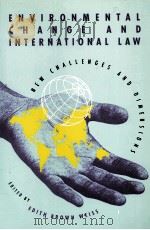
- Environmental change and international law : new challenges and dimensions
- 1992 United Nations University Press
-

- INTERNATIONAL LAW IN NATIONAL COURTS
- 1932 COLUMBIA UNIVERSITY PRESS
-

- NATIONAL CONSTITUTIONS AND INTERNATIONAL ECONOMIC LAW
- 1993 KLUWER LAW AND TAXATION PUBLISHERS
-
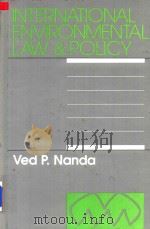
- International Environmental Law & Policy
- 1995 Transnational Publishers
-

- International Environmental Law Policy and Ethics
- 1997 Oxford University Press
-

- International and European Trade and Environmental Law After the Uruguay Round
- 1995 Kluwer Law International
-
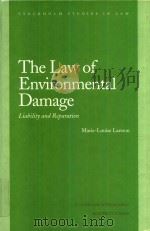
- The Law of Environmental Damage Liability and Reparation
- 1999 Kluwer Law International/Norstedts Juridik
-

- International Law Decisions in National Courts
- 1996 Transnational Publishers
-
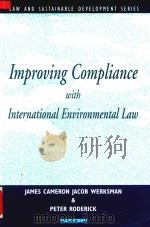
- Improving Compliance With International Environmental Law
- 1996 Earthscan Publication Ltd
-

- The Law of War Crimes National and International Approaches
- 1997 Kluwer Law International
-
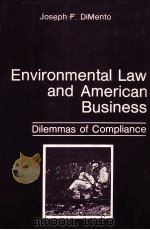
- ENVIRONMENTAL LAW AND AMERICAN BUSINESS DILEMMAS OF COMPLIANCE
- 1988 PLENUM PRESS
-

- ARBITRATION IN FRANCE THE FRENCH LAW OF NATIONAL AND INTERNATIONAL ARBITRATION
- 1982 KLUWER LAW AND TAXATION PUBLISHERS
-

- CONSUMER LAW IN THE GLOBAL ECONOMY NATIONAL AND INTERNATIONAL DIMENSIONS
- 1997 ASHGATE DARTMOUTH
提示:百度云已更名为百度网盘(百度盘),天翼云盘、微盘下载地址……暂未提供。➥ PDF文字可复制化或转WORD
